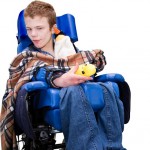
We have posted previously about the challenges faced by people with profound intellectual and multiple disabilities in communication and the ways in which those who support them might use a variety of tools to improve this. Researchers have asked whether it might be possible to look at changes in physiology to provide information on emotions and have reported that monitoring heart rate and skin temperature might provide good sources of information, whilst other studies have looked at how using a combination of behavioural and physiological measurements might help with an objective assessment of sensory responsiveness. We posted about a case study which suggested that using a combination of measurements of behavioural and physiological responses might help to provide an objective view of the responses of people with profound learning disabilities.
However, the evidence base remains slim and is growing slowly, with much of the work being case study or small scale investigations.
This current study adds to that case study evidence. The researchers set out to look at ways in which four autonomic nervous system (ANS) signals, electrodermal activity, skin temperature, cardiac patterns and respiratory patterns may help to enable interaction with people with profound intellectual and multiple disabilities.
What they did was carry out a series of case studies aimed at teaching a 15-year-old young person with profound intellectual and multiple disabilities to voluntarily control his autonomic nervous system signals for the purposes of communication. Training was carried out according to an alternating treatment single-subject research design.
Single-subject design is where the subject serves as their own control, rather than using another individual or group. Alternating treatment is where two interventions are introduced and alternated at each of the training sessions and offers the researcher the opportunity to of compare the two interventions.
What they found was that the training was not successful.
What they also found however was that autonomic nervous system signal patterns revealed issues unique to people with profound intellectual and multiple disabilities –
- profound intrasubject variability
- discrepancy between physiological responses and caregiver perspectives
- participant’s lack of contingency awareness
They recommend therefore that in order to develop the use of autonomic nervous system signals for communication, that these three areas must be addressed.
Challenges of developing communicative interaction in individuals with congenital profound intellectual and multiple disabilities, Blain-Moraes S & Chau T., in Journal of Intellectual and Developmental Disability, 37, 4 , 348-359
